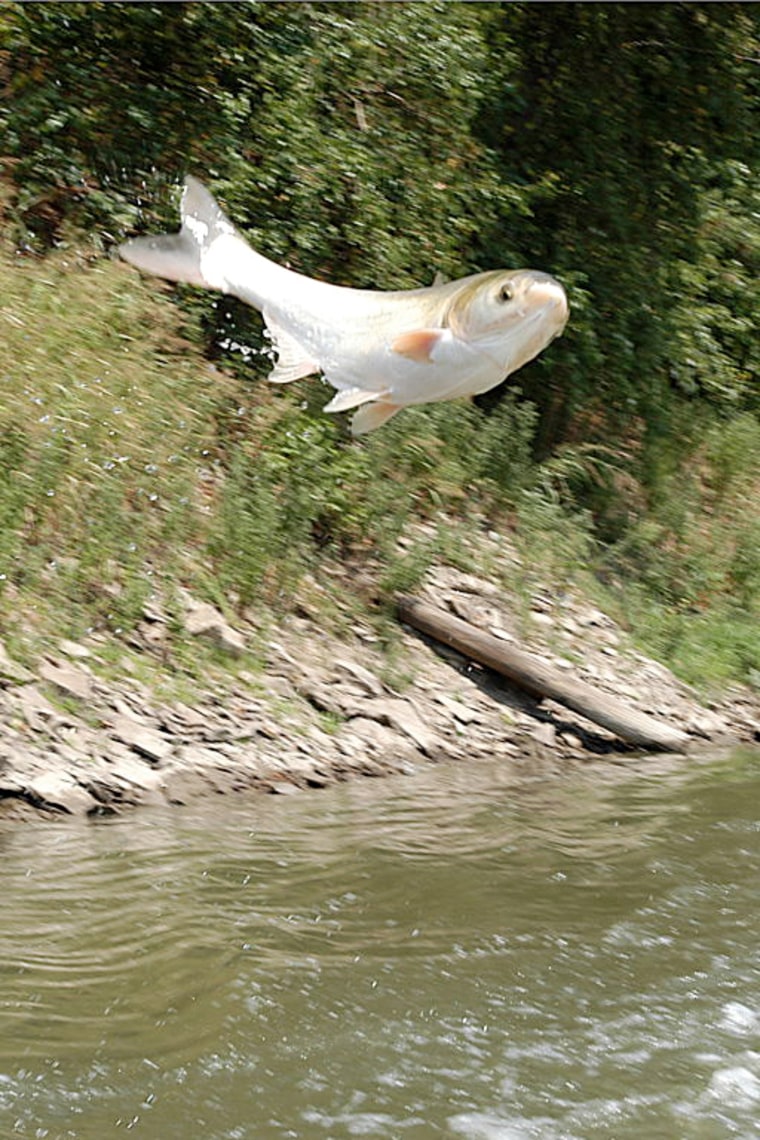Voracious carp that can literally throw themselves right into boats and pose a major ecological threat to Midwestern rivers and lakes could someday be a meal at the local zoo.
For years, boaters and fishermen on many Midwestern rivers have battled the Asian carp, brought to the U.S. by private fish farmers 30 years ago.
The high-jumping fish can be so dangerous that Missouri Department of Conservation staff wear head gear for protection while motoring on fast-moving boats. Some have protective netting around the driver area and across the bow.
There’s little profit for commercial fishermen in harvesting the fish. But the St. Louis Zoo may have a partial answer to that problem, as a team of researchers seeks to create a carp product to feed to animals.
“We want to make good food of bad fish,” said Ellen Dierenfeld, staff nutritionist at the zoo.
University of Missouri-Columbia food scientist Andrew Clarke has developed a “carp cake” made from raw, ground fish.
Dierenfeld hopes to begin a pilot feeding study with penguins, sea lions and pelicans by next spring. Other zoos may also participate, she said, and vitamins and mineral supplements could be added to the carp cake.
The St. Louis zoo, one of the nation’s largest, annually buys more than 60 tons of fish for feed — mostly species such as mackerel, herring and capelin. Prices range from 30 cents to 70 cents per pound, and zoo officials believe they could save money by feeding the carp to animals.
Dierenfeld believes up to 25 percent of the fish feed could be replaced with carp. “This would help reduce pressures on marine fisheries and help solve the Asian carp problem,” she said.
And if the more than 200 accredited U.S. zoos did likewise, commercial fishermen would have a reason to harvest the nuisance fish.
The Asian carp can eat up to 40 percent of their weight a day in plankton and were imported in the 1970s as a way to control algae and plankton in fish ponds. But during the floods of 1993 and 1995, the fish made their way into the wild.
It is believed the carp jump out of the water as a flight response when disturbed — possibly by the sound of the passing motor boat.
“They can break your nose or knock you out of the boat,” said Duane Chapman, a fisheries biologist with the U.S. Geological Survey who is part of the team working on the feed project.
The U.S. Fish and Wildlife Service earlier this month published a proposed rule to ban the import and interstate transport of silver carp.
One of environmentalists’ biggest worries is the possibility the fish could invade the Great Lakes, altering the ecosystem and harming the fishing industry. An electric barrier on the Chicago Ship and Sanitary Canal in Illinois aims to keep them out of Lake Michigan.
